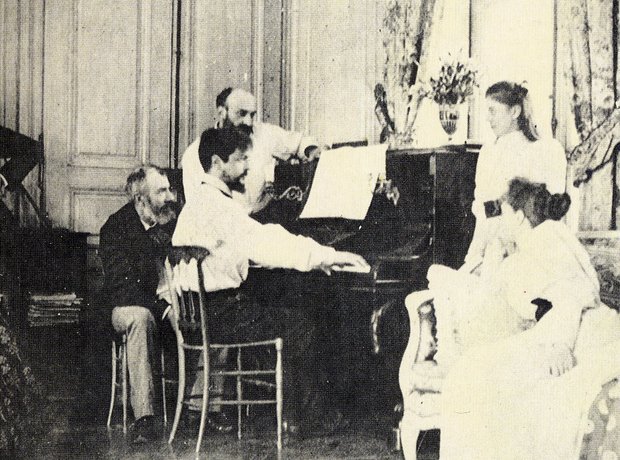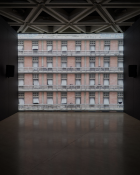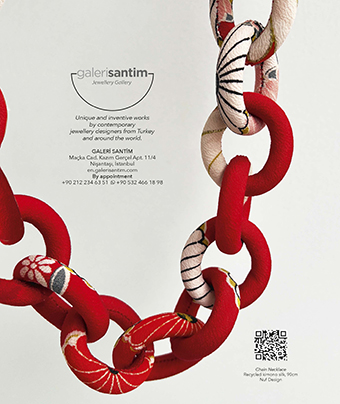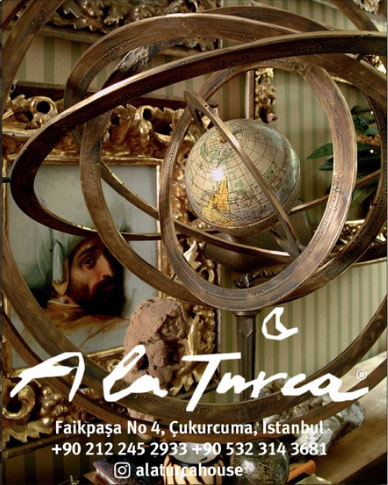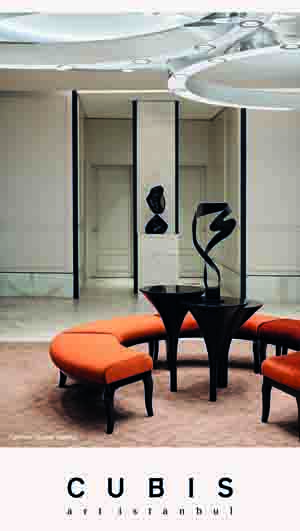This is the second part of Mélodies, a serialised blog that is intended to keep people’s minds off their troubles while they are in isolation. Just like the first part (which was about Reynaldo Hahn), this one focusses on a composer who wrote mélodies – French art songs – in the late 19th and early 20th centuries. With Achille-Claude Debussy (1862–1918), I confess that I have cheated: there were simply too many songs to present all at once, so I have divided them into two segments – Parts A and B. This first part deals with the songs he wrote before 1894, the year he finished Prélude à l’après-midi d’un faune (‘Prelude to the Afternoon of a Faun’), a piece that marks a turning point not just in the development of the composer, but also in the history of music.
And indeed, cheating is going to be one of our major themes: we will have authors lying about their works, fictional heroines who tell fibs to their mothers – and Achille-Claude himself, who on occasions tended to be somewhat parsimonious with the truth. It must be said that he was not exactly the ideal husband, either: his first wife Lilly, whom he had recently abandoned for another woman, went to the Place de la Concorde on the eve of their fifth wedding anniversary, pointed a revolver at herself, and pulled the trigger. Fortunately, she was a dreadful shot, and survived. She lived to see another 33 years, outliving her faithless husband by 14. The scandal that blew up in Paris as a result of this marital contretemps eventually forced Debussy to take his new lady off to Eastbourne to escape the flak. But I am getting ahead of myself… Watch this space.
Another confession: we will not be getting to Pamphylia until Part B, in which bases in Mytilene and Cyprus will also be touched. In the current piece, the furthest extent of our travels will be the railway line between Moscow and Central Russia. Rome will also be on the itinerary. Once again, I am (really, honestly! Cross me ’eart an’ ’ope to die!) going to list alternative performances of pieces for which alternative recordings of sufficient quality are available.
As a prelude to my run-down of Debussy’s career as a song-writer, I would like to introduce the reader to a cheery, light-hearted piece that ought to restore any flagging morale: his Printemps (‘Spring’), written in 1887. Just a little background: at this time he was living in Rome, having made the mistake of winning the prestigious Prix de Rome with his cantata L’enfant prodigue (‘The Prodigal Child’). As a result, he had been given a state scholarship to spend three years at the Villa Medici, a Renaissance palace – where he found life intolerable. He returned to Paris without completing his stint.
Admittedly, Printemps is not a song, though it does have a choir in it. The notes below the YouTube video give an interesting back story. It seems this was one of the new works the composer sent back to Paris to convince his mentors that he was spending his time in Rome profitably. Feeling miserable in his palatial – and no doubt over-restrictive – residence, and disinclined to go to the trouble of orchestrating the piece, he dispatched it in a version for piano (four hands), saying in an accompanying note that the orchestrated version had been ‘destroyed in a fire’.
This was, of course, a porker (tut, tut). In the event, Debussy never bothered to orchestrate it, even after his return to Paris. The arrangement we hear in the following recording is from the hand of Emil de Cou, the conductor who is wielding the baton in this performance by the San Francisco Ballet Orchestra and Chorus:
At this point, let us remind the reader once again that it is now a particular time of year. Like me, you may have noticed that while the humans are sequestered in lockdown, for nature it is very much business as usual – in fact, the birds are kicking up a tremendous racket, bless them. Gerard Manley Hopkins (1844–1889) had his own, very individual way of saying this:
Nothing is so beautiful as Spring –
When weeds, in wheels, shoot long and lovely and lush;
Thrush’s eggs look little low heavens, and thrush
Through the echoing timber does so rinse and wring
The ear, it strikes like lightnings to hear him sing;
The glassy peartree leaves and blooms, they brush
The descending blue; that blue is all in a rush
With richness; the racing lambs too have fair their fling.
No racing lambs in Levent or Laleli, unfortunately. But anyway, back to Debussy. He had been admitted to the Paris Conservatoire at the age of ten by reason of his precocious musical talent, though this talent was not inherited: there were no musicians in the family. His father kept a china shop in a far-from-prosperous Paris suburb and wanted his son to be a sailor. Initially, young Achille-Claude studied the piano, but a talent for composition soon began to rear its ugly head – ugly, that is, in the eyes of the traditionalist diehards at the Conservatoire, who were mortified by the juvenile Debussy’s originality. Legend has it that when one of these ultra-conservative teachers asked him what rules he followed in his compositions, he replied: “Mon plaisir!” (‘My pleasure!’).
Somehow he came to the attention of Nadezhda Filaretovna von Meck, a Russian lady who had previously been Tchaikovsky’s patroness. This woman is often mentioned in connection with Tchaikovsky, but her background is rarely investigated. In fact, she had inherited enormous wealth from her husband, who had made his fortune building Russia’s railways. Her Wikipedia entry has the following to say about this:
In 1860, there were only 100 miles of railroad track laid in Russia. Twenty years later, there were over 15,000 miles of lines. Much of this explosion was due to Karl von Meck, and his investments made him a multi-millionaire. The railway lines for which he was responsible included that from Kursk to Kiev and the highly profitable Moscow to Ryazan line, with its effective monopoly of grain transportation from the Black Earth Region of Central Russia. In 1876, Karl von Meck died suddenly, leaving a will which gave Nadezhda control of his vast financial holdings. This included two railway networks, large landed estates, and several million rubles in investments.
It seems she was quite a character:
Nadezhda von Meck was always compulsively busy. She took her elder servants on periodic inspection tours of her house, from cellar to roof, and cellar to roof never remained quite the same. String was saved for her to untangle and wind. Books were bought so that she might cut the pages. She purchased quantities of wool, which she then wound into balls and sent to her daughter, Countess Bennigsen.
Debussy does not seem to have been unduly put off by his patroness’s little foibles. No doubt he was not averse to spending his summer holidays from the Conservatoire at her various palatial residences (in Florence, Vienna, Moscow and elsewhere), though he was hardly on the same social level as the other members of her circle. All he had to do to earn his keep was play duets with Nadezhda and her children – of which, by the way, there were 13, though not all of them came with her on her visits to Europe.
English translations by Richard Stokes of many of Debussy’s songs are available on the Oxford Lieder website: https://www.oxfordlieder.co.uk/composers. On the Featured Composers page, you do not need to click on D for Debussy in the alphabet menu at the top: just click on his photograph, which is number three in the top row. Then click on Song List.
Among Debussy’s early chansons, to my mind three stand out. First, Nuit d’Étoiles (‘Starry Night’, 1876), a setting of a poem by Théodore de Banville. In this performance, Natalie Dessay is accompanied by Philippe Cassard:
Now, Madrid, finished in 1879. The poem is by Alfred de Musset, while the singer on this occasion is Véronique Dietschy, and the pianist Emmanuel Strosser:
Lastly, Mandoline, a setting of a poem by Paul Verlaine. The song was written either in late 1882 or in early 1883 (sources disagree on the date). The notes under the YouTube video give you some excellent background information on this period in the composer’s life. The recording is by the German-born – later naturalised British – soprano Elisabeth Schwarzkopf (1915-2006), accompanied by Gerald Moore:
You may have noticed that at the beginning of this last video, mention is made of Debussy’s then girlfriend Madame Vasnier. Those interested in reading a detailed account of his life and loves may wish to peruse this blow-by-blow biography in The Choral Singer's Companion It concentrates, most helpfully, on his vocal works – for chorus as well as for soloists.
Here is a selection of Debussy’s early songs performed (once again) by Natalie Dessay and Philippe Cassard, with some narrative mixed in. They perform several songs, including Nuit d’Étoiles – and one called Clair de Lune (1882) that is not, by the way, the piano piece we all know. For me, the real treat (apart from Natalie Dessay’s expressive arm movements and the superb piano sound) is the last song they perform, Regret (1884). It is a setting of a poem by Paul Bourget. For this, scroll on to 07:28:
With Ariettes Oubliées (‘Forgotten Airs’, written between 1885 and 1887, and subsequently revised in 1903), our composer earned widespread acclaim as a song-writer. The first lines of the six poems in the cycle – which are once again by Verlaine – are as follows: C’est l’extase langoureuse, Il pleure dans mon coeur, L’ombre des arbres, Chevaux de bois, Green and Spleen. With the exception of Spleen, they are relaxed in mood, though not quite as fluffy and effervescent as Printemps: even Il pleure dans mon coeur (‘Tears fall in my heart’) is a series of romantic sweeps rather than a sock full of Valium-enriched sand. One might conjecture that at this time of his life, Debussy composed happy music to lighten his gloom – he was stuck in Rome, and longing to be back in Paris with his ladylove.
Here is a performance of Ariettes Oubliées – with the score – by the American soprano Dawn Upshaw and pianist James Levine:
What Wikipedia says about the style of these songs is worth reproducing:
In the ‘Ariettes oubliées’, subtlety, nuance, rhythm and tone color (timbre) converged to create a mature compositional style for Debussy … This collection of songs set the tone for all of Debussy's future vocal compositions in terms of rhythm, harmony, tone, color and attention to poetic detail.
I am not sure I agree that this collection set the tone for all Debussy’s later vocal compositions: it seems to me that in Chansons de Bilitis (1897–98), he ventured much further along the path he had set for himself. I would, however, endorse the view that the Ariettes oubliées exhibit a ‘mature compositional style’ – though that style did not, of course, stop developing in 1887: at this comparatively early stage in the composer’s career, the weirdness of the second book of Préludes (1912–13) is still far away. (The use of the term ‘weirdness’ is not intended as a criticism, by the way. I am merely alluding to the highly unusual harmonic vocabulary.)
The fact is that Debussy’s evolution as a composer took place over a long period, and that over time he departed further and further from what we might call ‘C Major and All That’: in the Études for piano, written in 1915, it is frequently difficult to identify any overarching tonality. By this time, of course, Scriabin and Schoenberg had thrown the tonality we know and love out of the window – in Schoenberg’s case, the baby had followed the bathwater into defenestration – but Debussy never let himself stray quite as far from the safety of the shore as those two did.
Now, a live performance of Ariettes oubliées by a duo described as ‘Astral Artists’ – who turn out to be soprano Sarah Shafer and pianist Zhenni Lee. At first, the piano tends to sound rather more subdued than necessary (or is it the way the microphones are positioned?), but things really come alive with Chevaux de bois (‘Merry-go-round’ – literally, ‘Wooden horses’) at 07:49. In fact, you might do worse than to scroll on to that point:
In the following video, we hear only the first song of the cycle – C’est l’extase langoureuse – sung by the American soprano Barbara Hendricks with Michel Béroff on the piano. No problem hearing the lyrics here! If I had been in the mixing room, however, I would have insisted on keeping the piano a little more in the background:
Staying, for the time being, with our ‘langourous rapture’, here is a master class in Montreal with François le Roux, who makes some very telling remarks on the job of the singer, on Debussy in general, and of course on the pronunciation of French:
For a long time Beau Soir (‘Beautiful Evening’), a stand-alone setting of a poem by Paul Bourget, was thought to have been written when the composer was 15 or 16; more recent scholarship, however, places its date at 1890 or 1891, when he was nearing 30. The words are, frankly, depressing, so you are hereby warned to take them with a pinch of salt – or something sweeter or more liquid, as the spirit moves. In the following video, Beau Soir is being performed by the American soprano Renée Fleming; the piano accompaniment is by Jean-Yves Thibaudet, that pianiste formidable from Lyon. The notes below the YouTube version give you an English translation of the words, so you will not need to go to ‘Oxford Lieder’ for this one. An added advantage is that you get the score:
Next, a performance of Beau Soir by a chorus; this piece has been arranged for a large number of combinations of instruments and voices. Notice how at 0:44 the pianist gives the girls of Samuel Marsden Collegiate School the note they are to come in on, thumping it out with a hefty octave. Professional soloists performing this piece have to find the B flat all by themselves. As someone who has trained and conducted choirs, I can’t say I blame Linda Steen Spevacek, the person responsible for this arrangement, for giving the choir a helping hand when needed: Debussy isn’t always considerate to his vocalists, as I will have occasion to remark at a later stage. The group singing the next-to-top line go out of tune through over-enthusiasm at 01:23, but full marks to the chorus as a whole for managing the chromaticism successfully, and to their conductors for teaching them how to do that gorgeous crescendo at 0:54:
Speaking of arrangements, I find the version of Beau Soir for violin and piano especially pleasing. Here are violinist Anne-Sophie Mutter and her indefatigable accompanist Lambert Orkis:
Notice how the poor pianist has to crank the piano stool down before he can start playing: I once had the experience of walking onto the stage at an august musical institution only to find that the piano stool was stuck in the fully-elevated position. I applied as much force as could decently be exhibited in front of an audience to lower it, but to no avail. Then the person who had invited me to perform shouted out: “You won’t be able to fix it. It’s been like that for ages.” So I bit my lip, gave up, and played from atop a crow’s nest.
1891 saw the completion of another set of Debussy chansons – the first volume of Fêtes Galantes. The three songs are entitled En sourdine (‘Muted’), Fantoches (‘Puppets’) and Clair de lune (‘Moonlight’) – this last being yet another different version. The lyrics are by Paul Verlaine, who in his 1874 poem Art poétique had written: ‘Music before all else / And for that choose the irregular / Vaguer and melting better into the air.’ The musicologist Roger Nichols describes Fantoches as ‘energetic and sparkling’, contrasting with the first and third songs, which ‘float timelessly, allowing us to savour the famous “musicality” of Verlaine’s poetry’. I will allow you to judge for yourself. Here is a performance by the American singer Frederica von Stade. She is accompanied by Martin Katz, the person you have just seen giving a master class:
The next video also has the Fêtes Galantes, but this time they are preceded by a setting of L’échelonnement des haies (‘The hedgerows stretch out’), another Verlaine poem. The performers are Anne-Marie Rodde and Noel Lee:
Fêtes Galantes can, of course, be sung by both sexes. Here is a rendition by the distinguished French baritone Gérard Souzay (1918-2004), accompanied on this occasion by the late Dalton Baldwin (1931-2019):
The last song-cycle I will present before leaving Achille-Claude in peace to write Prélude à l’après-midi d’un faune, his first great masterpiece, is Proses Lyriques. These four songs – which are entitled De rêve, De grève, De fleurs and De soirs – appeared in July 1893, a year and two months before the Prélude was completed. This time, the words are the composer’s own. Most critics, including John Keillor (who wrote the detailed notes underneath the YouTube recording listed below) have panned both them and the music; however, I will not attempt to prejudice your judgement. (Dear reader, please read that last sentence again: I thought I could not possibly leave your presence without depositing at least one pork pie of my own on your patio.) And so, bowing out to work on the second part of Debussy’s song-writing career, I will hand you over to German soprano Christine Schäfer and American pianist Irwin Gage:

